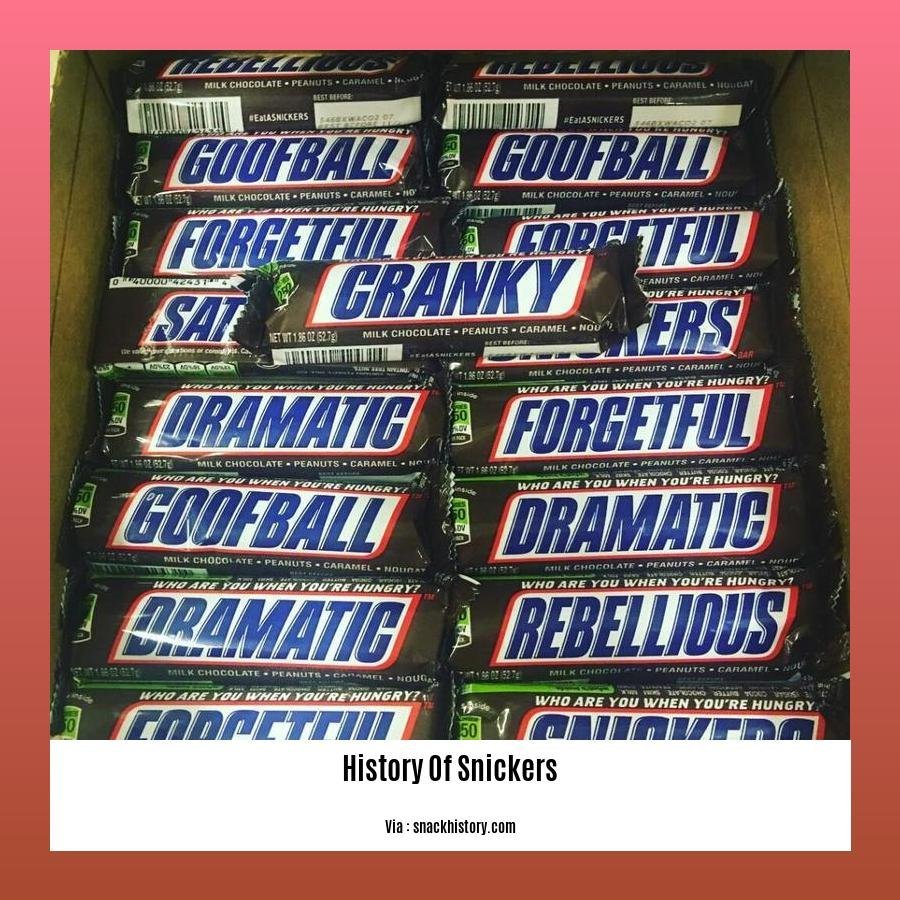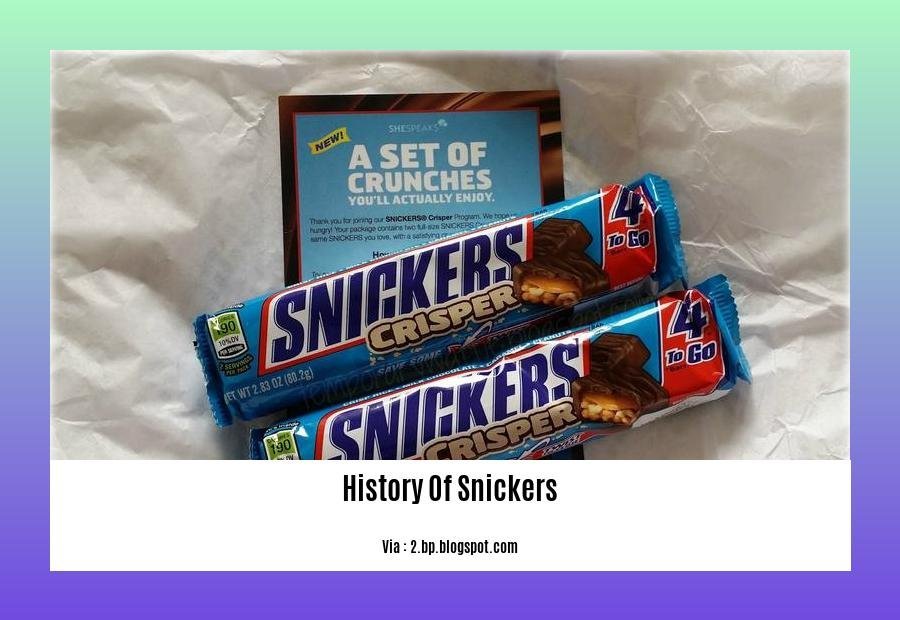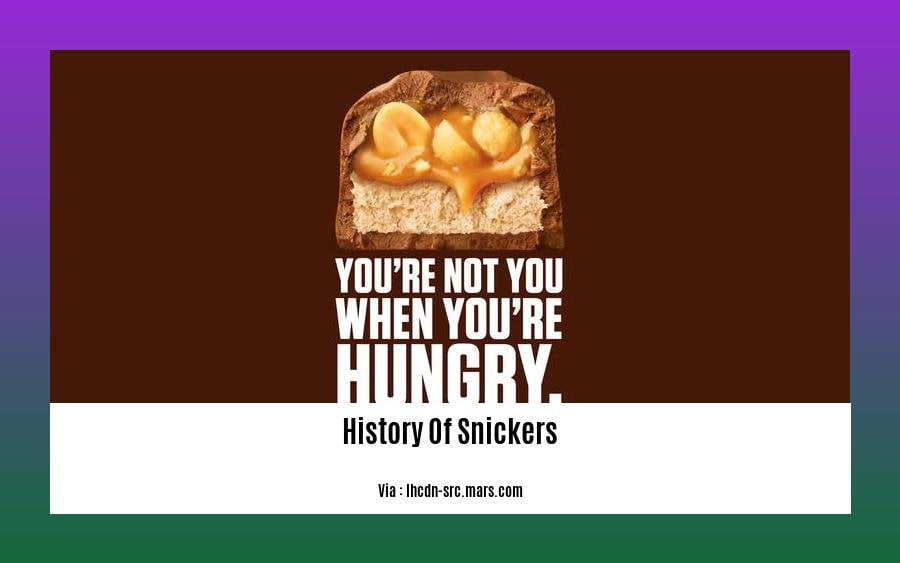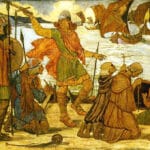Step into the rich and delectable history of Snickers, a confectionery icon that has tantalized taste buds worldwide for over a century. From its humble beginnings as a peanut-caramel cluster to its evolution into a global sensation, Snickers has left an indelible mark on the confectionery landscape. Join us on a journey through time as we explore the fascinating story behind this beloved candy bar and uncover the secrets of its enduring legacy.
Key Takeaways:
Snickers, created by Mars in 1930, was named after the family’s beloved horse.
Initially called Marathon in the UK and Ireland, the candy bar was renamed Snickers in 1990 to align with the US market.
Snickers combines nougat, peanuts, and caramel, a popular flavor combination at the time.
Its creation took three years, developed by Frank and Ethel Mars, also the creators of the Milky Way chocolate bar.
History of Snickers: A Legacy of Sweet Success

Have you ever stopped to think about the journey that brought your favorite candy bar into existence? The history of Snickers is a tale of innovation, marketing genius, and enduring consumer love.
The Early Years: The Birth of a Classic
In 1930, during the Great Depression, Frank Mars, the visionary behind Mars Inc., set out to create a candy bar that would stand out from the crowd. Inspired by the family’s beloved horse, Snickers, the bar was born.
The original Snickers was a simple yet delicious combination of nougat, peanuts, and caramel, a winning formula that has remained unchanged for decades.
Conquering the Globe: Snickers Goes International
The success of Snickers in the United States was undeniable, and Mars had bigger ambitions: to make it a global sensation. However, there was a catch.
In the United Kingdom and Ireland, a candy bar called Marathon had already captured the hearts of consumers. To avoid confusion, Mars decided to rename Snickers to Marathon in these markets.
United Under One Name: The Power of Snickers
As time went on, Mars realized that having two different names for the same product was confusing and limiting the brand’s potential.
In 1990, a bold decision was made: Marathon would be renamed Snickers worldwide, unifying the brand under one iconic name.
Marketing Magic: The Snickers “You’re Not You When You’re Hungry” Campaign
In the 1980s, Snickers launched a revolutionary advertising campaign that would become one of the most recognizable and successful in history.
The “You’re Not You When You’re Hungry” campaign tapped into a universal truth: hunger can make people irritable and irrational. The ads featured hilarious scenarios where people’s hunger transformed them into exaggerated versions of themselves.
Snickers Today: A Global Confectionery Giant
Today, Snickers stands as one of the most popular candy bars in the world, enjoyed by people of all ages in over 80 countries.
Its enduring success is a testament to the Mars family’s commitment to quality, innovation, and understanding the power of branding and marketing.
Once widely popular, discover the fascinating history of smoking ICD 10 and how it evolved over time. history of smoking icd 10
Have you ever wondered about the origins of soccer boots? Unravel the history of soccer boots and how they have revolutionized the game. history of soccer boots
Get ready to be amazed by the rich history of softball and its journey from a backyard pastime to a captivating sport that continues to inspire. history of softball
The Rise of Snickers: Marketing and Global Expansion
Imagine a world without Snickers, the iconic candy bar that has tantalized taste buds and satisfied cravings for nearly a century. Its journey from a humble confection to a global phenomenon is a testament to brilliant marketing strategies, strategic partnerships, and an unwavering commitment to consumer satisfaction. Join us as we delve into the fascinating tale of how Snickers rose to become one of the world’s most beloved treats.
Marketing Masterstrokes: Crafting a Legacy of Delight
Snickers’ marketing prowess is nothing short of legendary. The brand’s iconic “You’re Not You When You’re Hungry” slogan, introduced in the 1980s, revolutionized the way candy bars were advertised. With its clever humor and relatable message, the campaign struck a chord with audiences worldwide, establishing Snickers as more than just a snack but a mood-altering experience.
Global Expansion: Conquering Hearts and Taste Buds Worldwide
Snickers’ global expansion is a story of strategic partnerships and astute market analysis. Recognizing the potential of international markets, Mars forged alliances with local distributors, ensuring Snickers’ presence in key regions. This savvy move allowed the brand to tap into diverse consumer preferences and adapt its marketing strategies accordingly, winning hearts and taste buds worldwide.
Innovation and Adaptation: The Key to Enduring Success
Snickers’ success story is not just about marketing brilliance; it’s also about a commitment to innovation and adaptation. Over the years, the brand has introduced a variety of flavors and formats, catering to evolving consumer tastes. From Snickers with almonds to the bite-sized Snickers Minis, the brand has demonstrated a remarkable ability to stay relevant and exciting, ensuring its enduring popularity.
Key Takeaways:
- Snickers’ iconic “You’re Not You When You’re Hungry” campaign revolutionized candy bar advertising.
- Strategic partnerships and astute market analysis fueled Snickers’ successful global expansion.
- Innovation and adaptation have been key to Snickers’ enduring success, with new flavors and formats catering to evolving consumer tastes.
- Snickers’ global presence and enduring popularity are a testament to its marketing prowess, strategic partnerships, and commitment to consumer satisfaction.
[Sources]
– https://startuptalky.com/snickers-marketing-strategy/
– https://bettermarketing.pub/how-snickers-pulled-off-one-of-the-great-marketing-comebacks-97032998f2d9
Snickers in Popular Culture and Global Recognition

The cultural impact of Snickers, a brand that has left an indelible mark on popular culture, is undeniable. It has been referenced in songs, TV shows, and movies, showcasing its widespread appeal. Let’s delve into a few instances where Snickers made its presence felt:
Television and Movies:
- In the iconic 1980s sitcom “Seinfeld,” Jerry famously exclaimed, “Snickers makes everything better,” encapsulating the brand’s feel-good image.
- In the popular 2003 holiday movie “Elf,” Buddy the Elf shares his love for Snickers, leading to a humorous scene where he tries his hand at creating a Snickers bar.
Music:
- Singer Lizzo mentions Snickers in her hit song “Juice,” rapping, “I like my money long, just like my Snickers.”
- The rap group Run-DMC also showed their appreciation for the candy bar in their song “My Adidas,” with the line, “Snickers satisfy the sweet tooth of Muhammed.”
Snickers’ global recognition is further cemented by its impressive presence in over 80 countries worldwide. The candy bar’s adaptability and universal appeal have enabled it to transcend borders and cultures, becoming a beloved snack across the globe.
Key Takeaways:
- Cultural Impact: Snickers has been referenced in numerous forms of popular culture, including TV shows, movies, and music, demonstrating its widespread appeal.
- Global Presence: The candy bar has achieved impressive global recognition, with a presence in over 80 countries worldwide.
- Adaptability: Snickers’ ability to adapt to different cultures and preferences has contributed to its worldwide success.
Sources:
- Snickers: The Enduring Legacy of a Confectionery Icon
- Snickers in Popular Culture
The Enduring Legacy and Future of Snickers
Ever since the Mars family introduced Snickers in 1930, it’s become a beloved confectionery icon, conquering hearts and taste buds worldwide. But what gives this candy bar its remarkable staying power? Let’s dive into the fascinating journey of Snickers, exploring its enduring legacy and unveiling its promising future.
Snickers’ Humble Beginnings:
In the 1930s, during the Great Depression, Frank Mars, the patriarch of the Mars family, sought to create a candy bar that was not only delicious but also affordable. His inspiration came from his favorite horse, Snickers. The result? A delightful symphony of flavors – chewy nougat, crunchy peanuts, gooey caramel, and rich milk chocolate – all wrapped up in a single, satisfying bar.
A Global Sensation:
Snickers quickly became a hit, and by the 1950s, it had become a household name in the United States. But Mars had bigger ambitions – to make Snickers a global sensation. The candy bar’s international journey began in the 1960s, and today, it’s enjoyed in over 80 countries, transcending borders and uniting candy lovers everywhere.
The Power of Advertising:
Snickers’ success can’t be attributed solely to its taste. The brand’s clever and memorable advertising campaigns have played a crucial role in its enduring legacy. From the iconic “You’re Not You When You’re Hungry” slogan to the hilarious “Get Some Nuts” commercials, Snickers has mastered the art of connecting with consumers on an emotional level.
Adapting to Changing Tastes:
In the ever-evolving world of consumer preferences, Snickers has proven its ability to adapt and thrive. When faced with declining sales around fifteen years ago, the brand went back to its roots, emphasizing its unique combination of flavors and its ability to provide a quick energy boost. This strategic repositioning resonated with consumers, leading to a remarkable comeback and a 15% increase in global sales within two years.
A Sweet Future:
So, what does the future hold for Snickers? With its enduring legacy and unwavering commitment to innovation, the possibilities are endless. Snickers will undoubtedly continue to embrace new trends, explore new flavors, and seek new markets, ensuring its position as a global confectionery powerhouse for years to come.
Key Takeaways:
Snickers was created in 1930 by Frank Mars, named after his favorite horse, and quickly became a hit in the United States.
Snickers’ global journey began in the 1960s and today, it’s enjoyed in over 80 countries, transcending borders and uniting candy lovers everywhere.
Snickers’ clever advertising campaigns, such as “You’re Not You When You’re Hungry” and “Get Some Nuts,” have played a crucial role in its enduring legacy and connecting with consumers emotionally.
When faced with declining sales, Snickers successfully repositioned itself, emphasizing its unique flavors and energy-boosting properties, leading to a remarkable comeback and increased sales.
Snickers continues to adapt to changing consumer preferences, embrace new trends, explore new flavors, and seek new markets, ensuring its position as a global confectionery powerhouse.
Sources:
The Sweet History of Snickers: Pop Culture’s Favorite Candy Bar
How Snickers Pulled Off One of the Great Marketing Comebacks
FAQ
Q1: How did Snickers get its name?
A1: Snickers was named after the Mars family’s favorite horse, which was a beloved part of their lives.
Q2: Why was Snickers originally called Marathon in the UK and Ireland?
A2: Snickers was initially launched in the UK and Ireland under the name Marathon to avoid confusion with other Mars products already on the market. However, in 1990, the name was changed to Snickers to align with the global branding strategy.
Q3: What is the unique combination of ingredients in a Snickers bar?
A3: Snickers is made with a delicious combination of nougat, peanuts, and caramel, all coated in a layer of rich milk chocolate. This combination of textures and flavors has made Snickers a beloved treat worldwide.
Q4: How did Snickers become one of the world’s most famous confectionery products?
A4: Snickers rose to prominence thanks to its unique flavor combination, satisfying texture, and effective marketing campaigns. The brand’s ability to tap into consumer preferences and create a memorable brand identity contributed to its global success.
Q5: How did Snickers overcome its branding issue and achieve a remarkable comeback?
A5: Snickers faced a branding challenge around 15 years ago, leading to declining sales. To address this, the brand refocused on emphasizing its core qualities, such as its satisfying flavor combination and energy-boosting properties. This repositioning strategy resulted in a remarkable comeback, with sales increasing by 15% worldwide within two years.
- Star Ring Trends: Etsy vs Amazon - March 28, 2025
- Boost Pollinator Habitats: Baby Blue Eyes Sustainable Farming Guide - March 28, 2025
- Protect Big Black Bears: Effective Conservation Strategies - March 28, 2025
















